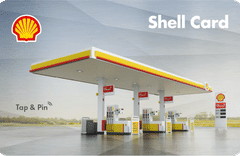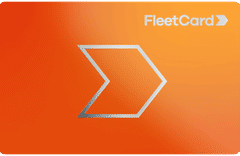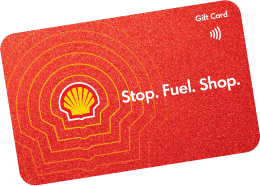Many Australian businesses are transitioning to a greener, more sustainable future by incorporating electric vehicles (EVs) and hybrids into their fleets. However, managing a mixed fleet can be complicated. The good news is fuel cards can play a crucial role in simplifying this process. In this article, we’ll discuss the challenges of managing a mixed fleet, and how a fuel card can help support your business and its bottom line.
The Challenges of Mixed Fleets
- Tracking fuel consumption: Different vehicles use different types of fuel: electricity for EVs, petrol/diesel for hybrids and traditional vehicles. So, tracking fuel/energy consumption can be difficult.
- Optimising Fuel Usage: Each type of vehicle has its own way of measuring efficiency, making it hard to standardise and optimise fuel usage.
- Cost Management: The prices of petrol, diesel, and electricity can vary widely, making budgeting more complicated. Plus, handling separate invoices for each type of fuel adds to the paperwork and administrative workload.
- Charging Infrastructure: Setting up a reliable charging infrastructure for EVs is essential but can be costly.
- Range Management: Planning routes for EVs requires more thought because charging stations are not as common as fuel stations.
How a Mixed Fuel Card Can Support Your Fleet Management
Managing a fleet with a mix of electric, hybrid, and traditional combustion vehicles doesn’t have to be complicated. Here’s how a mixed fleet card can better help you manage your fleet and keep your business moving forward.
Tracking Fuel/Energy Consumption
- All-in-One Card: A mixed fleet card combines all types of fuel—electricity, petrol, and diesel—into one system. This makes it simpler to track fuel & energy consumption for every vehicle in your fleet.
- Easy Reporting: A mixed fleet card provides detailed reports on fuel and energy usage, so you can easily see how much fuel/energy each vehicle is using and find ways to save.
Optimising Fuel/Energy Usage
- Efficiency Insights: Mixed fleet cards give you insights into how efficiently each vehicle type is using fuel/power. This helps you make informed decisions and optimise fuel usage across your fleet.
- Smart Route Planning: Some cards come with tools to help you plan the best routes, considering both fuel stations and EV charging points. This ensures your vehicles run efficiently and avoid unnecessary detours.
Cost Management
- Simplified Billing: With a mixed fleet card, you get one invoice that covers all types of fuel. This reduces paperwork and makes it easier to manage your budget.
- Spending Controls: The card allows you to set limits and restrictions on spending, helping you keep fuel costs under control.
Charging Infrastructure
- Wide Network Access: A mixed fleet card gives you access to a large network of EV charging stations and traditional fuel stations, making it easy to refuel or recharge all your vehicles. This is especially useful if you don’t have EV charging infrastructure at your workplace.
Range Management
- Telematics Integration: Some fleet cards offer telematics integration, helping you monitor vehicle range and optimise energy usage, reducing downtime and improving your overall efficiency.
Mixed Fleet Card Providers in Australia
In Australia, FleetCard +Electric stands out as the only provider offering a comprehensive mixed fleet card that supports both traditional fuel and electric vehicle (EV) charging. While FleetCard has taken the lead with this innovative solution, other fuel card providers have yet to keep pace.
Major players like BP and Ampol have announced plans to introduce similar mixed fleet cards, but they haven’t launched these services yet. This leaves FleetCard +Electric as the primary option for businesses needing an all-in-one solution for managing diverse vehicle fleets.
About FleetCard +Electric
FleetCard +Electric operates similarly to a traditional fuel card, but with added features to support (EV) charging.
- At fuel stations, you can use FleetCard +Electric as you would a regular fuel card. Swipe the card at participating fuel stations to pay for petrol or diesel.
- To charge an EV, simply swipe the card at any of the Chargefox EV charging stations. The cost of the charge will be billed directly to the business account.
At the end of each month, your business will receive a single consolidated invoice that includes all fuel and EV charging transactions. This makes it easy to review expenses and manage budgets.
Where Can You Use A FleetCard +Electric Card?
FleetCard +Electric can be used at a wide range of locations across Australia, covering both traditional fuel stations and EV charging points.
Traditional Fuel Stations
FleetCard +Electric is accepted at over 90% of fuel stations across Australia, including major brands and independent operators. Some of the covered fuel stations include:
- BP
- Ampol
- Shell
- Caltex
- 7-Eleven
- United Petroleum
- Metro Petroleum
EV Charging Stations
For electric vehicle charging, FleetCard +Electric provides access to the extensive Chargefox network, which includes over 2,000 charging stations. Chargefox is the largest EV charging network in Australia, offering both fast and ultra-rapid charging options. Key locations in the Chargefox network include:
- Chargefox ultra-rapid charging stations
- Chargefox fast charging stations
- Partner networks that include public charging points at shopping centres, car parks, and service stations
Additional Services & Partners
Apart from fuel and EV charging, FleetCard +Electric can also be used at over 6,000 partner sites for various car-related services. These services include:
- Tires
- Glass repair and replacement
- Car washes
- Battery services
- Vehicle servicing and repairs
- Parts and fluids
When is the Right Time to Move to a Mixed Fleet?
Is your business ready to transition to an EV fleet? Here are some key points to help you decide:
Understanding Costs
Start by looking at the initial expenses. Electric vehicles (EVs) and hybrids often come with higher upfront costs, including the price of the vehicle and the battery. However, the savings on fuel and maintenance can offset these costs over time. It’s important to compare the total cost of ownership for both types of vehicles.
Charging vs. Fueling
Charging an EV can be cheaper than fueling a petrol or diesel vehicle, but the cost varies based on where and how you charge. Charging at home might be less expensive than using public charging stations. Understand these cost differences to budget effectively.
Managing Charging Times
Charging an EV takes longer than filling up with petrol or diesel. You need to plan for these longer charging times in your schedule. Use the vehicle’s downtime, such as overnight or during breaks, to charge them. This way, they are ready to go when needed without disrupting your operations.
Infrastructure Needs
Consider whether you need to install charging stations at your depot or if you can rely on public ones. The location of these charging stations is crucial. They should be conveniently placed along your routes to avoid delays and ensure your vehicles are always ready.
Read more: Transitioning to EV Fleets: 9 Things Australian Businesses Need to Know
The Future of Mixed Fleets in Australia
Australia is on the brink of a significant transformation in the way businesses manage their vehicle fleets. With the push towards sustainability and the increasing adoption of electric vehicles the future of managing mixed fleets should become easier.
Sustainability Drive
The Australian government and many industries are pushing hard for sustainability. This includes policies to reduce carbon emissions and encourage the use of cleaner energy. As businesses get on board with these goals, they are more likely to add electric vehicles and hybrids to their fleets, cutting down on their environmental impact.
Adoption of Electric Vehicles
Electric vehicle adoption in Australia is growing fast. Sales are up, thanks to government incentives and more EV models becoming available. These changes make it easier for businesses to consider EVs as a good option for their fleets, mixing them with their petrol and diesel vehicles.
Evolving Infrastructure
The development of EV charging infrastructure is making it easier for businesses to manage mixed fleets. Companies like Chargefox are expanding their networks of fast-charging stations, ensuring that EVs can be conveniently charged across the country. This growing infrastructure reduces range anxiety and makes the day-to-day management of EVs simpler.
Technological Integration
Fleet management technology is getting better at supporting mixed fleets. Advanced systems now offer integrated solutions that track and manage the fuel and energy use of both traditional and electric vehicles. This integration helps businesses analyse data more effectively, optimise their operations, and cut costs.
Explore Your Fuel Card Options
Curious if your business qualifies for a mixed fleet fuel card? Use our eligibility checker to find out! It’s quick and easy—just answer a few simple questions to see if you can start taking advantage of fuel and EV charging solutions. Discover how our fuel cards can help you manage expenses, streamline operations, and support your transition to a more sustainable fleet.
Check your eligibility now and start optimising your fleet management today!





